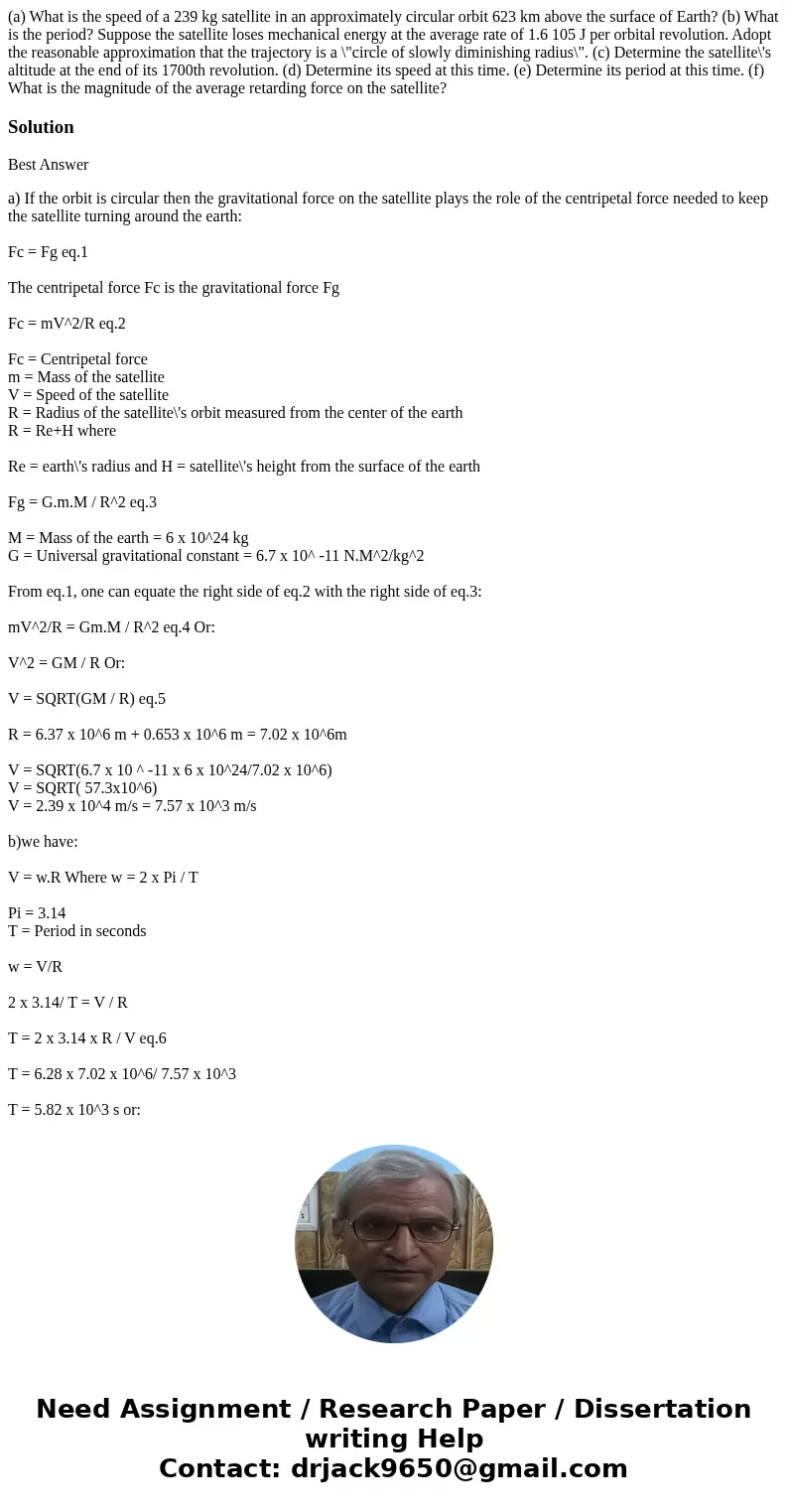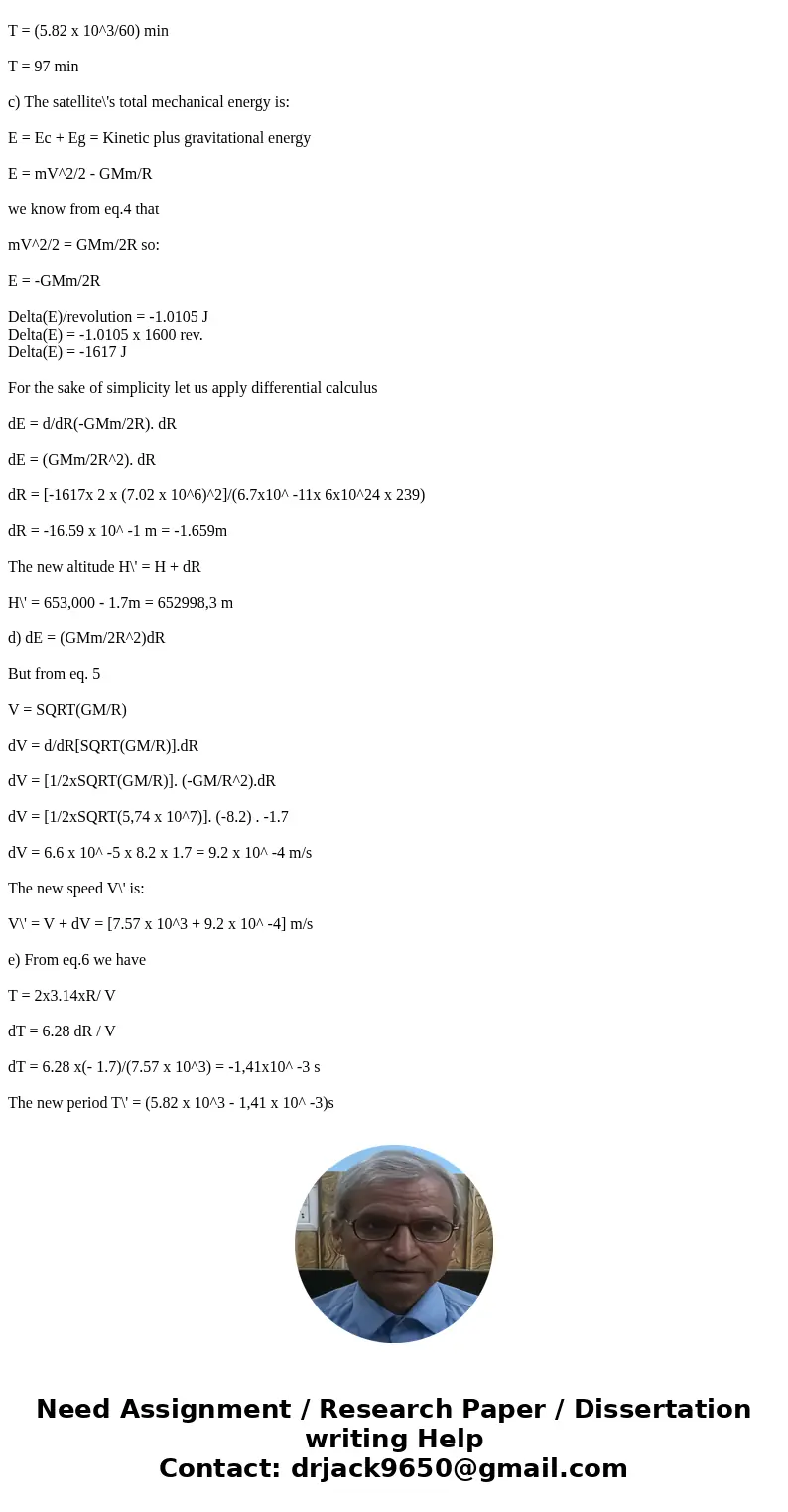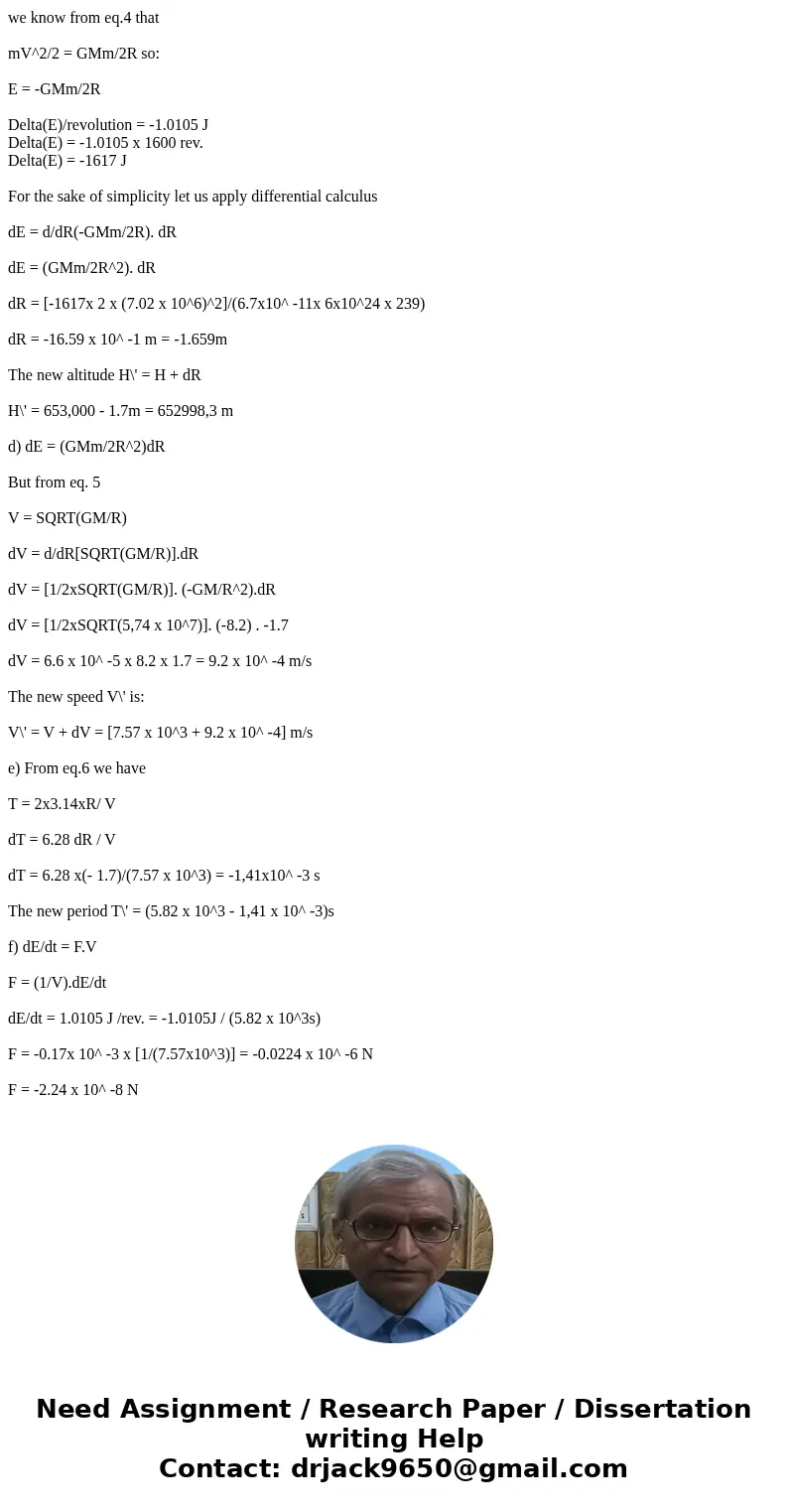a What is the speed of a 239 kg satellite in an approximatel
(a) What is the speed of a 239 kg satellite in an approximately circular orbit 623 km above the surface of Earth? (b) What is the period? Suppose the satellite loses mechanical energy at the average rate of 1.6 105 J per orbital revolution. Adopt the reasonable approximation that the trajectory is a \"circle of slowly diminishing radius\". (c) Determine the satellite\'s altitude at the end of its 1700th revolution. (d) Determine its speed at this time. (e) Determine its period at this time. (f) What is the magnitude of the average retarding force on the satellite?
Solution
Best Answer
a) If the orbit is circular then the gravitational force on the satellite plays the role of the centripetal force needed to keep the satellite turning around the earth:
Fc = Fg eq.1
The centripetal force Fc is the gravitational force Fg
Fc = mV^2/R eq.2
Fc = Centripetal force
m = Mass of the satellite
V = Speed of the satellite
R = Radius of the satellite\'s orbit measured from the center of the earth
R = Re+H where
Re = earth\'s radius and H = satellite\'s height from the surface of the earth
Fg = G.m.M / R^2 eq.3
M = Mass of the earth = 6 x 10^24 kg
G = Universal gravitational constant = 6.7 x 10^ -11 N.M^2/kg^2
From eq.1, one can equate the right side of eq.2 with the right side of eq.3:
mV^2/R = Gm.M / R^2 eq.4 Or:
V^2 = GM / R Or:
V = SQRT(GM / R) eq.5
R = 6.37 x 10^6 m + 0.653 x 10^6 m = 7.02 x 10^6m
V = SQRT(6.7 x 10 ^ -11 x 6 x 10^24/7.02 x 10^6)
V = SQRT( 57.3x10^6)
V = 2.39 x 10^4 m/s = 7.57 x 10^3 m/s
b)we have:
V = w.R Where w = 2 x Pi / T
Pi = 3.14
T = Period in seconds
w = V/R
2 x 3.14/ T = V / R
T = 2 x 3.14 x R / V eq.6
T = 6.28 x 7.02 x 10^6/ 7.57 x 10^3
T = 5.82 x 10^3 s or:
T = (5.82 x 10^3/60) min
T = 97 min
c) The satellite\'s total mechanical energy is:
E = Ec + Eg = Kinetic plus gravitational energy
E = mV^2/2 - GMm/R
we know from eq.4 that
mV^2/2 = GMm/2R so:
E = -GMm/2R
Delta(E)/revolution = -1.0105 J
Delta(E) = -1.0105 x 1600 rev.
Delta(E) = -1617 J
For the sake of simplicity let us apply differential calculus
dE = d/dR(-GMm/2R). dR
dE = (GMm/2R^2). dR
dR = [-1617x 2 x (7.02 x 10^6)^2]/(6.7x10^ -11x 6x10^24 x 239)
dR = -16.59 x 10^ -1 m = -1.659m
The new altitude H\' = H + dR
H\' = 653,000 - 1.7m = 652998,3 m
d) dE = (GMm/2R^2)dR
But from eq. 5
V = SQRT(GM/R)
dV = d/dR[SQRT(GM/R)].dR
dV = [1/2xSQRT(GM/R)]. (-GM/R^2).dR
dV = [1/2xSQRT(5,74 x 10^7)]. (-8.2) . -1.7
dV = 6.6 x 10^ -5 x 8.2 x 1.7 = 9.2 x 10^ -4 m/s
The new speed V\' is:
V\' = V + dV = [7.57 x 10^3 + 9.2 x 10^ -4] m/s
e) From eq.6 we have
T = 2x3.14xR/ V
dT = 6.28 dR / V
dT = 6.28 x(- 1.7)/(7.57 x 10^3) = -1,41x10^ -3 s
The new period T\' = (5.82 x 10^3 - 1,41 x 10^ -3)s
f) dE/dt = F.V
F = (1/V).dE/dt
dE/dt = 1.0105 J /rev. = -1.0105J / (5.82 x 10^3s)
F = -0.17x 10^ -3 x [1/(7.57x10^3)] = -0.0224 x 10^ -6 N
F = -2.24 x 10^ -8 N



 Homework Sourse
Homework Sourse